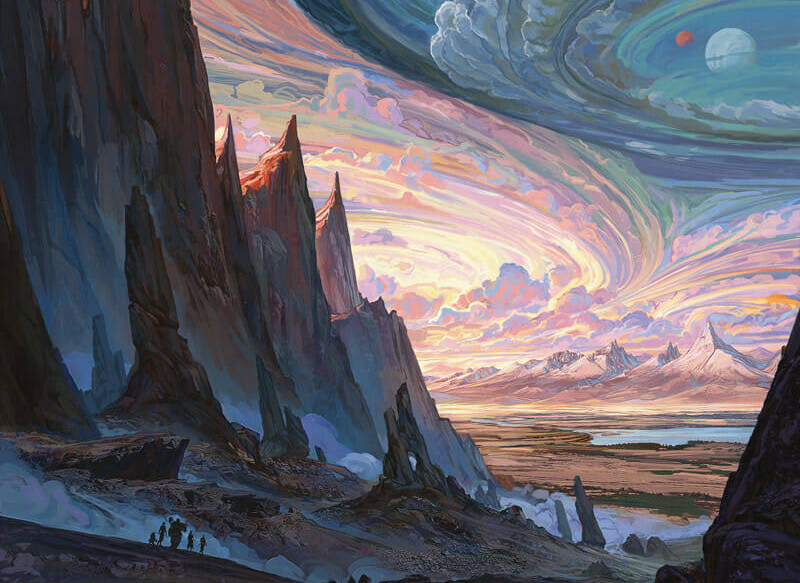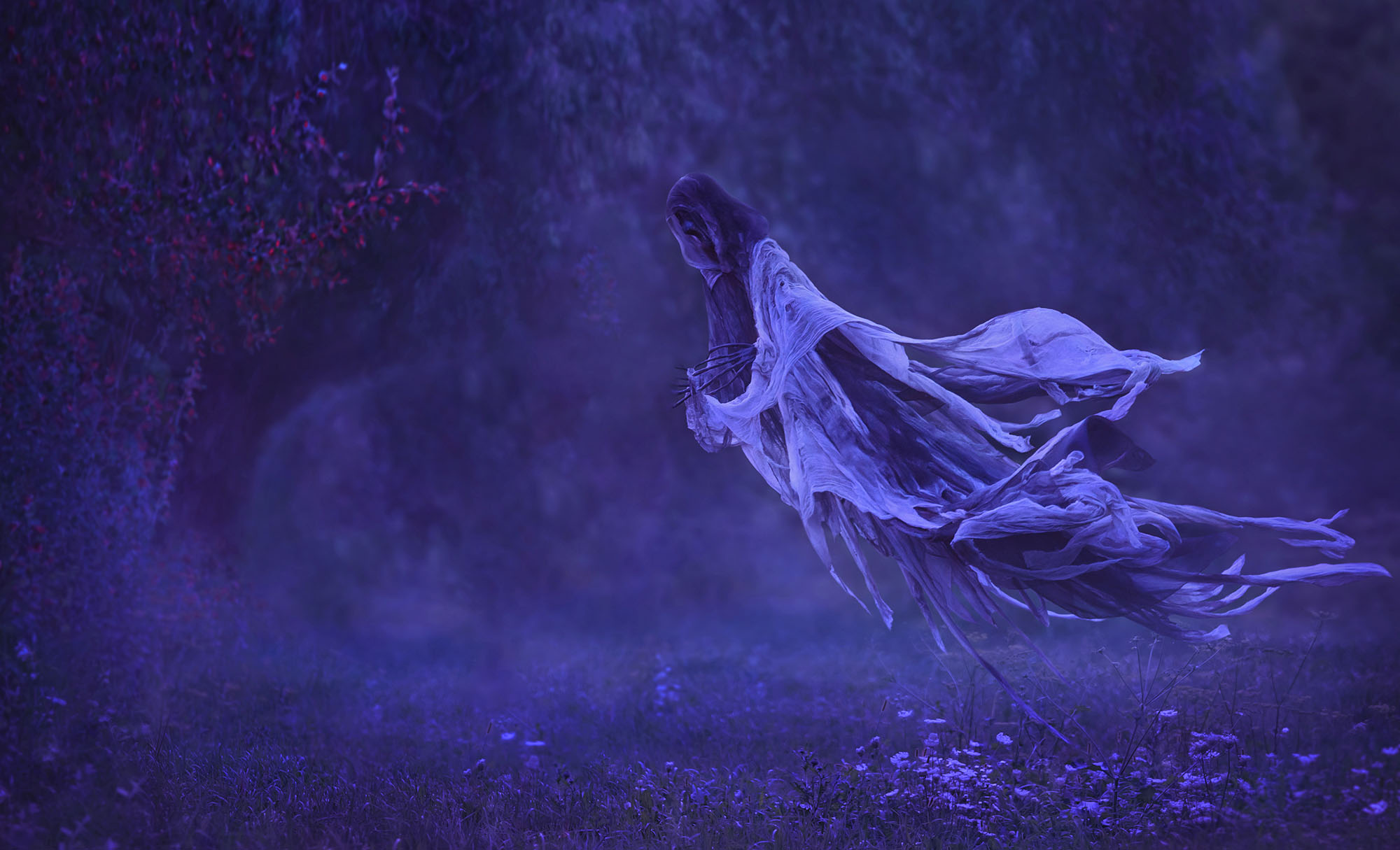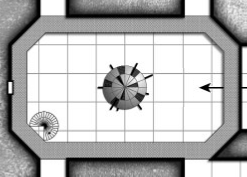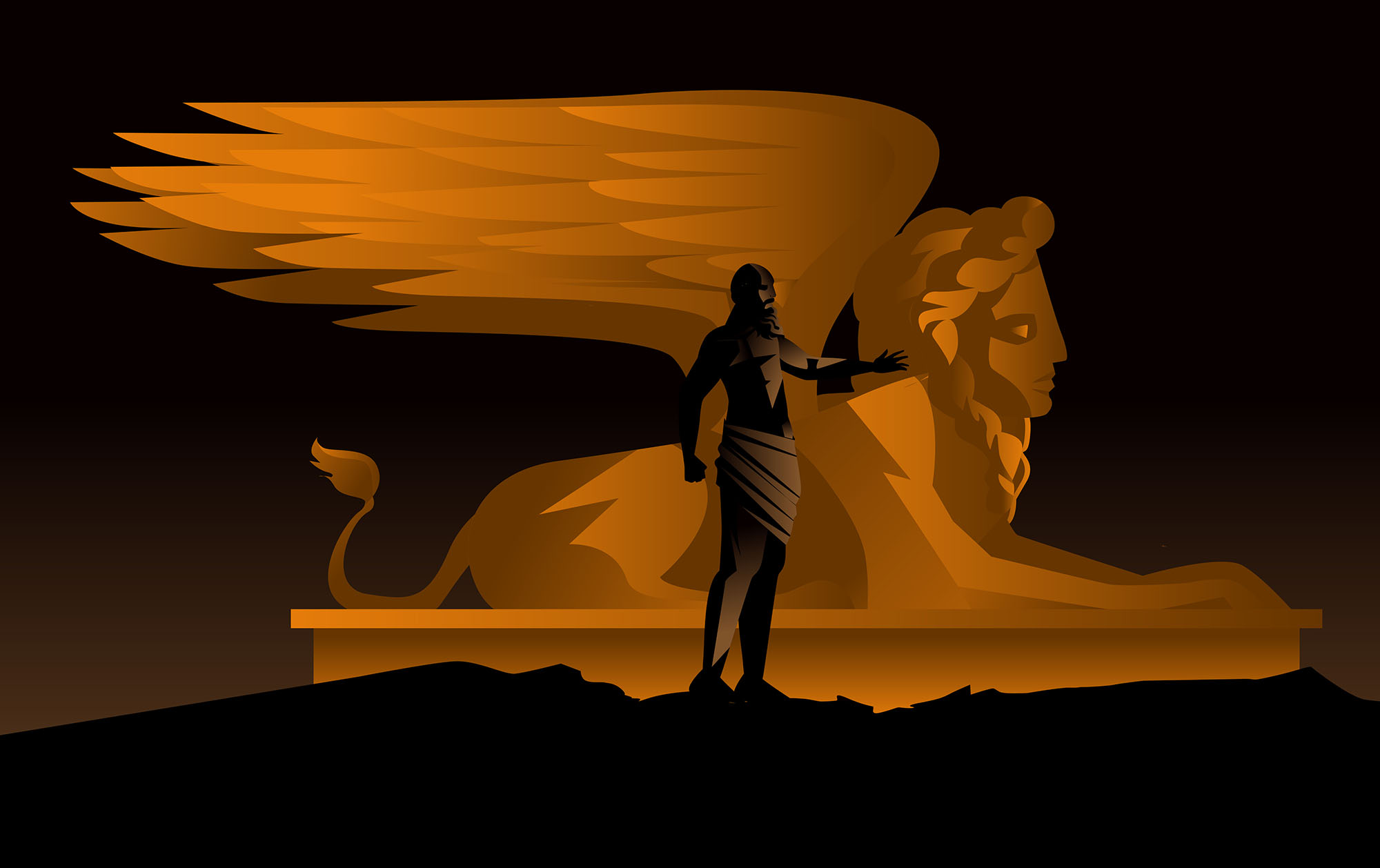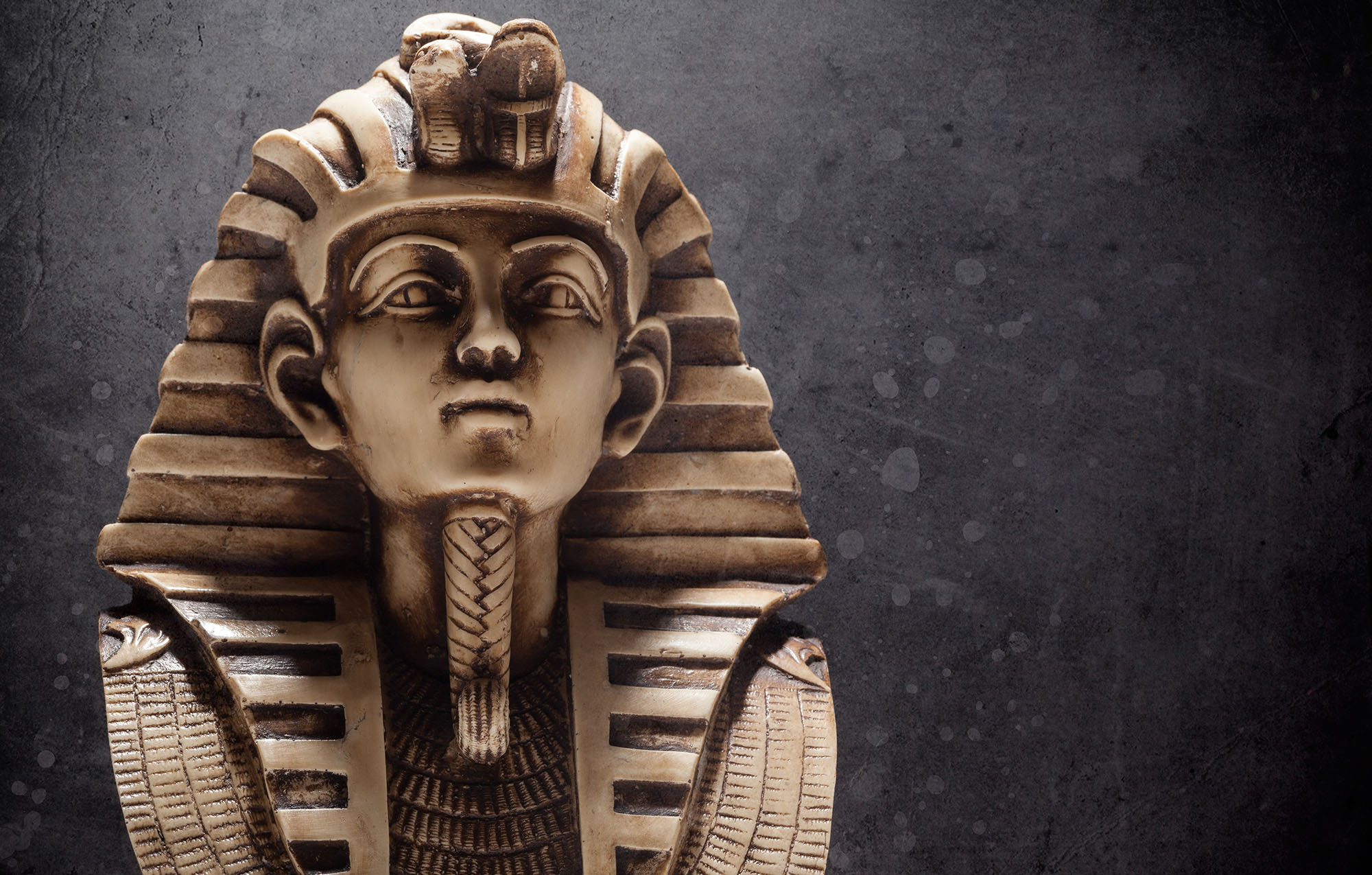If you’re familiar with the Alexandrian Remixes – e.g., of Eternal Lies, Dragon Heist, Descent Into Avernus, etc. – that’s not what we’re doing here. For better or worse, I’m not currently planning to do a full remix of Call of the Netherdeep.
This article is more of a How To guide: If I were to do a remix of Call of the Netherdeep, this is how I would do it, with tips and tricks for your own campaign along the way.
You may want to check out How to Remix an Adventure. I’ll also be largely assuming that you’re familiar with Call of the Netherdeep, so if that’s not the case you may want to start by checking out my review of Call of the Netherdeep, which includes a summary. I’ve also written a few other articles about Call of the Netherdeep and will be referencing those where appropriate.
In terms of a broad overview, we’re going to start by looking at campaign-wide elements:
- Running the Rivals
- Revelation List: Campaign Agendas
- Revelation List: Lore of Alyxian
- Ruidium
Call of the Netherdeep is a linear campaign (Jigow → Emerald Grotto → Bazzoxan → Ank’Harel → Cael Morrow → Netherdeep), so once we’ve looked at the campaign-wide structures, we’ll largely just be walking through the campaign from beginning to end.
Of course, no battleplan survives contact with reality. So if you start digging in here and discover cool tips, tricks, and/or alternatives, make sure to come back and let the rest of us know!
RUNNING THE RIVALS
A primary feature of Call of the Netherdeep is the rival adventuring group: Ayo Jabe, Dermot Wulder, Galsariad Ardyth, Irvan Wastewalker, and Maggie Keeneyes.
I’ve previously written Running the Rivals, which provides a detailed breakdown and analysis of how the Rivals can be tweaked and used to best effect in Call of the Netherdeep. I’m not going to repeat all of that material here, but the core concept is that the Rivals should be debating the agenda with the PCs:
- Where should we be going?
- What should we be doing?
- Why are we doing it?
- How should we do it?
- Who is Alyxian and what should be his fate?
And the key to running them effectively is the Principle of Opposition: Whatever the PCs think the right course of action is, the Rivals take the opposite opinion.
The Rivals thus help to define the shape of the campaign, and push the players to (a) think deeply about what they’re doing and (b) make meaningful choices that reflect the values and experience of the PCs.
But in order to make meaningful choices — and certainly if you’re going to actively debate those choices! — you first have to understand those choices. Which brings us to…
REVELATION LIST: CAMPAIGN AGENDAS
Because Call of the Netherdeep is a linear campaign, its structure can be understood as a series of agendas — i.e., the sequence of goals that move the PCs through the campaign.
In the campaign as written, unfortunately, these goals are generally underdeveloped, vague, and merely procedural. For example, when the PCs are sent to Bazzoxan they aren’t given a true, actionable reason for going; instead an NPC just tells them to go.
This is a missed opportunity. We’ll be looking at some of the specific agendas in more detail below, but in order to build any of them you need to start with the foundation. In order for the players to understand the agendas and make meaningful choices, they’ll need the context provided by answering three campaign-wide questions:
What is the Jewel of Three Prayers? Specifically, the PCs should be able to figure out that it was empowered by the gods to aid Alyxian three times; that shrines were erected in those places; and that they need to find the shrines in order to fully reactivate the Jewel.
What is ruidium and what should be done with it? This obviously includes the properties of ruidium itself, but it should also become clear that ruidium is appearing at sites associated with the Apotheon.
Who is Alyxian the Apotheon? Answering this means piecing together the details of his story and framing the ultimate question of the campaign, which is whether he should be helped, freed, or destroyed. (You may also discover that understanding what’s at stake if the Apotheon is freed is an important and distinct revelation.)
In practice you can break the answers to these questions down into a revelation list:
- Properties of the Jewel of Three Prayers.
- The Jewel of Three Prayers was empowered by the gods three times.
- Shrines were erected near each location where the Jewel was empowered.
- The Jewel can be fully reactivated by visiting the shrines.
- Properties of ruidium.
- Ruidium is appearing in sites associated with the Apotheon.
- The Lore of the Alyxian (which we’ll look at in more detail below.)
Each revelation should, of course, be supported by the Three Clue Rule — e.g., for each conclusion you need the PCs to make, you should include three clues pointing at it. Here’s some general advice you might find useful as you place these clues throughout the campaign:
First, the PCs should ideally have been able to piece together at least a general understanding of what’s happening before they get to Bazzoxan. If not, you’ll likely get stuck in a situation where the scholars from Ank’Harel are just dumping tons of exposition on the players.
On the other hand, you don’t want to dump so many clues into Jigow that the players have everything figured out before they hit the road. Call of the Netherdeep should be driven, in part, by the desire to unravel these enigmas. If the PCs get all the answers right up front, it will have a negative effect on the campaign.
You may, therefore, want to carefully consider further splitting and layering the revelations. For example, maybe the PCs can figure out very early on that the shrines are associated with the Jewel of Three Prayers, but they won’t be able to find any clues revealing that it’s because the gods empowered the Jewel at these locations until later.
As you’re thinking about sequencing the revelations, it may be useful to think of it in overlapping phases. You don’t need to, for example, put all the clues regarding the three shrines in Jigow and then all the clues revealing that the gods empowered the Jewel in Bazzoxan. Instead you might put a couple of shrine-clues in Jigow and another in Bazzoxan; then put a couple of gods-empowered-clues in Bazzoxan and another in Betrayers’ Rise. The sequencing remains likely, but isn’t rigidly locked in. More importantly, this gives you a lot more flexibility in designing and incorporating clues in a way that feels natural and organic.
Finally, if the players are engaged with the campaign, it’s quite likely they might try to figure out how to do some direct research to answer these questions. You may have an impulse to stymy them. Don’t.
But, by the same token, you also don’t want to just dump all the answers on them. (Because (a) you are still trying to pace the campaign appropriately and (b) the whole point is that the answers here are obscure and difficult to obtain.)
A good technique for this is to have their research reveal where they can go to get more information, rather than just dumping the information. In other words, the research provides an action instead of an answer.
For example, consider the transition from the Emerald Grotto to Bazzoxan. If the PCs choose to research the strange Jewel they’ve obtained — no matter how they might go about doing that — you just need to explain why the answer they’re looking for is in Bazzoxan:
- You discover that there’s a painting on the wall of Betrayers’ Rise which depicts the Jewel.
- Here’s a journal of one of the explorers who delved too deep and awakened the abyssal gate in Bazzoxan. The end of the journal trails off into mad gibberings, but it includes a vivid description of a figure that resembles the one you saw in your vision.
- It seems that the leading expert on this is [insert one of the three scholars]. Ank’harel would be a very long journey, but you’re in luck: Recent reports suggest that they’re on a field assignment in Bazzoxan.
You can repeat this same logic at any other point — and for any other structural link — in the campaign. (You learn that the answers you seek are in Betrayer’s Rise / in Ank’harel / in Cael Morrow, etc.)
LORE OF THE ALYXIAN
In talking about campaign-wide revelations, I want to take a closer look at the lore surrounding Alyxian the Apotheon, in large part because it’s absolutely vital for the campaign’s conclusion.
When the PCs reach the Netherdeep, they are confronted by an extraplanar extrusion of a demigod’s traumatized mind. As they explore the physical space of the Netherdeep, they are simultaneously delving into the mystery of Alyxian’s past (and the trauma he has suffered).
This is a really cool dungeon, but in its current form the Netherdeep is doing most of the heavy lifting for both establishing a mystery (What is Alyxian’s story?) and then also solving that mystery. If you want to elevate this material, then you need to pull some of this amassed lore backwards so that it appears meaningfully earlier in the campaign. (All the way back, in fact. From the Emerald Grotto if not earlier.) What you want is for this enigma (Who is the Apotheon?) to be much more front-and-center throughout the campaign, so that by the time the PCs get to Netherdeep the players are fully engaged with the mystery and trying to figure it out. The Netherdeep should just be the focused resolution, as they fill in the gaps and realize some deep and terrible emotional truths.
The result will be much more satisfying, and feel more like the culmination of an entire campaign, instead of just another procedural step.
To understand what I mean here, let’s consider one small, concrete example: In Area 24 of the Netherdeep, the PCs encounter Perigee the Deva. This celestial actually fought with Alyxian during the Calamity centuries ago and remains, ruidium-corrupted, by his side even now.
This could be a really incredible moment: The PCs get to meet this legendary figure out of myth!
… but it really only works if you know who Perigee is before you walk into that room. And in Call of the Netherdeep, you don’t.
Imagine that you went on an adventure in the dungeon beneath the hill where King Arthur is buried, fated to rise in Britain’s hour of greatest need. As you journey through the dungeon you encounter some of his knights: Galahad, perhaps. Percival. Guinevere.
Those are cool moments because you recognize those names: “Holy crap! It’s Guinevere!”
But you don’t get that moment with Perigee because… well, who the heck is Perigee? No one at the table cares.
But if you establish Perigee earlier in the campaign — she appears in a mural in Betrayers’ Rise; she’s mentioned in a scrap of poetry; she has a statue in Cael Morrow or the Emerald Grotto — then you CAN have the moment of, “Holy crap! It’s Perigee!”
You just have to put the work in.
Check out Getting the Players to Care for various techniques you can use for doing this. There are already numerous opportunities throughout the campaign for including this lore, you just have to take advantage of them:
- Establishing the Calamity during the Festival of Merit.
- Murals in the Emerald Grotto prayer site.
- The first vision.
- What the Elders of Jigow know.
- What basic research in Jigow can uncover.
- Lore in Betrayers’ Rise.
- Lore held by the Bazzoxan researchers.
- What advanced research in the libraries and lore-stocks of Ank’Harel can uncover.
- More material seeded in Cael Morrow.
What you want to do is flip to Chapter 6 in Call of the Netherdeep and make a list of Apotheon-related lore that should get pre-established for maximum effect. That’s your revelation list. Now you can just apply the Three Clue Rule by seeding lore into the opportunities listed above (plus any other clever ideas you come up with).
In doing this, remember that your goal is to maximize the payoff in the Netherdeep. Don’t reveal enough? The players won’t be engaged in trying to figure it out. Reveal too much? You’ll undermine the revelations of the final act.
You’ll know you have the balance right if:
- The players already have strong opinions about Alyxian before ever reaching Ank’Harel (and, ideally, those opinions are varied and shifting); and
- The players have big questions about the Apotheon that they talk about and clearly want answers to.
This will allow the Rivals to challenge those opinions and to join in the discussion hypothesizing what the answers might be. But, even more importantly, the desire to answer those questions will motivate the agenda of the campaign.
RUIDIUM
RUIDIUM METAMAGIC: Ruidium — the crystalline residue of an ancient power that corrupts its users — is a really cool riff on a primal fantasy trope.
The mechanics for ruidium corruption (CotN, p. 10) seem really cool. There’s a nice pacing to them and a very flavorful progression of symptoms erupting across the victim’s body.
Because it’s so cool, I’d really like to see a greater temptation for the PCs to meddle with it. The existing mechanic is:
RUIDIUM SPELL COMPONENTS
One ounce of ruidium can be substituted for 500 gp worth of any material component needed to cast a spell. A creature that casts a spell using ruidium as a replacement component must succeed on a DC 20 Charisma saving throw or gain 1 level of exhaustion after the spell is cast. If the creature isn’t already suffering from ruidium corruption, it becomes corrupted if it fails the saving throw.
To this, I recommend adding:
RUIDIUM METAMAGIC
Ruidium can also be used to increase the effectiveness of a spell. Any spellcaster can use ruidium while casting a spell to duplicate the effects of a metamagic option (as per the sorcerer’s class ability), expending a number of ounces of ruidium equal to the number of sorcery points that would normally be required to use the metamagic option.
When using ruidium metamagic, the caster must make a DC 20 Charisma saving throw for each ounce of ruidium used, or suffer the consequences listed above.
Ruidium can only be used to add one metamagic option to a spell, although a sorcerer can still apply one of their metamagic options to the spell normally (as long as it is a different metamagic option).
RUIDIUM LORE: A fairly large logic hole in Call of the Netherdeep is the motivation for the Ank’harel scholars to come to Bazzoxan. According to the book, they’ve come to study a site associated with an “unknown hero who wore the Jewel of Three Prayers.”
But… why?
They’re all interested in ruidium and its sources, but there’s nothing in Cael Morrow to point the researchers at either the Jewel or the Betrayer’s Rise as being related to ruidium.
You could solve this by adding Jewel-lore to Cael Morrow. That way, the researchers could connect the Jewel-references to Bazzoxan (just like the PCs do coming from a different direction). But given the importance of ruidium in the campaign, I think it’s actually more effective to introduce it earlier. So what I suggest is adding ruidium to the Emerald Grotto and Betrayer’s Rise. In other words, ruidium is manifesting at all of the sites associated with the Apotheon.
The scholars can now follow leads to this other source of ruidium, and will have come to Bazzoxan in an effort to figure out the connection. This also means that the PCs have potentially valuable information to trade with the scholars if they’ve previously identified ruidium in the Emerald Grotto.
This fixes both the logic of the campaign and foreshadows the importance of ruidium.
If you want to go even further with this, I recommend extending the history of ruidium: Trace amounts of it have been found in the area around Ank’harel for generations, requiring painstaking efforts to gather enough of it serve as a reagent. Alchemical studies have revealed a connection to the light of Ruidus, with various theories postulating that some specific condition results in the moon’s red light “precipitating” the substance. When recent explorations of Cael Morrow revealed huge outcroppings of the stuff, it precipitated the current arms race.
This background provides a context in which the PCs can research the strange red crystals and learn more about them.
It also means that you can use an interest in ruidium to motivate the PCs’ trip to Bazzoxan, Ank’harel, or both as the opportunity presents itself.
REMIXING CALL OF THE NETHERDEEP
Part 2: Jigow
Part 3: Emerald Grotto
Part 4: Road to Bazzoxan
Part 5: Scholars of Ank’Harel
Part 6: Betrayers’ Rise
Part 7: Cael Morrow
Part 8: Faction Missions in Ank’Harel
Part 9: Netherdeep Wrap

